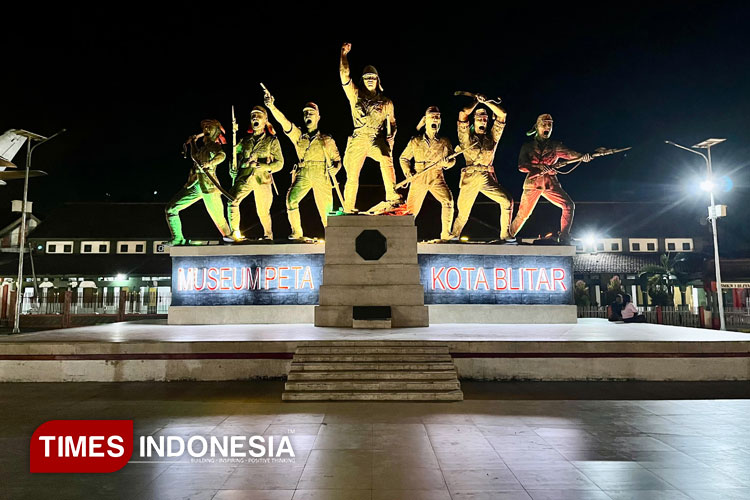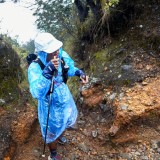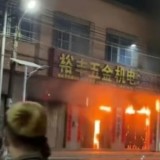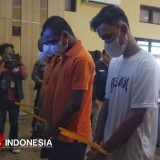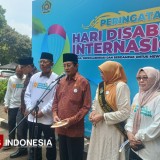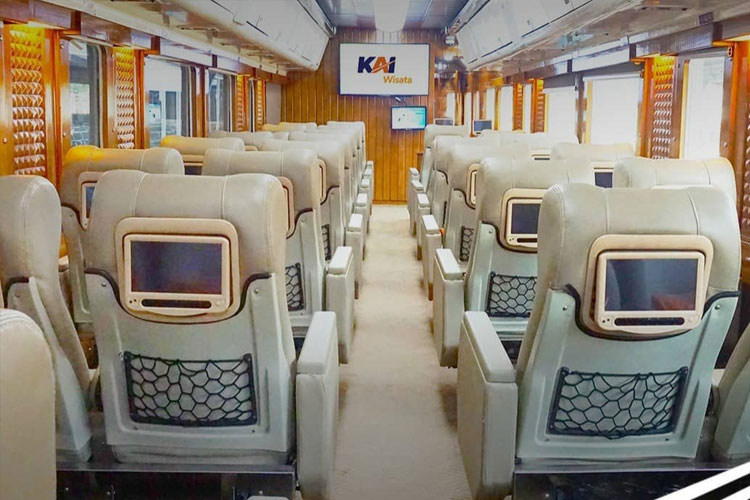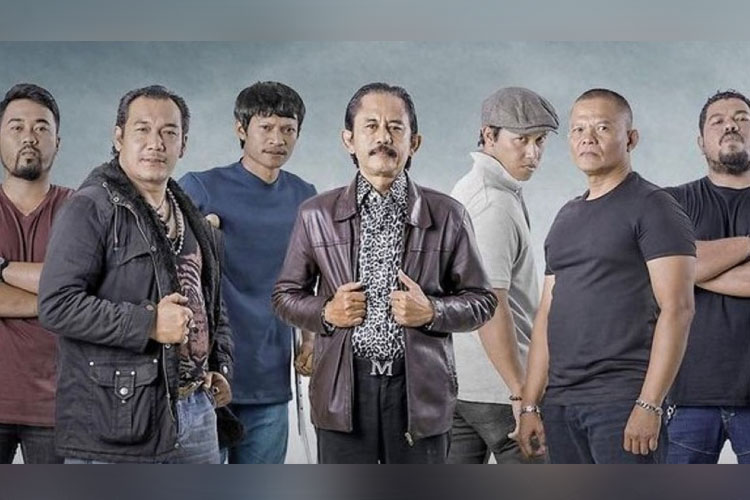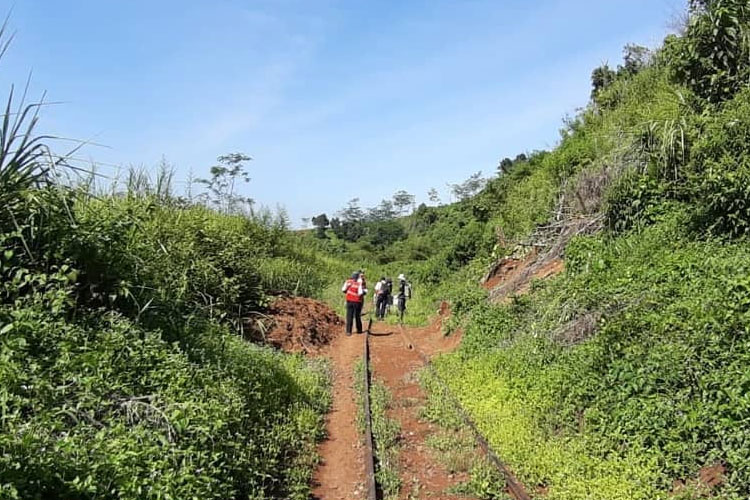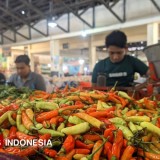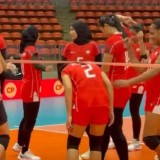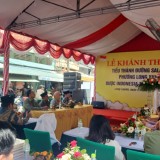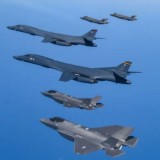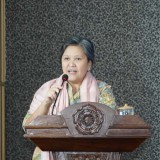TIMES BLITAR, BLITAR – The PETA Museumm in Blitar stands as a historical landmark that chronicles the struggle of the Defenders of the Homeland (Pembela Tanah Air or PETA) army against Japanese occupation during the colonial period.
Located in Blitar City, East Java, the museum serves as both a historical archive and an educational space, preserving artifacts, relics, and monuments that tell the story of Indonesia’s journey toward independence.
On Tuesday (August 5, 2025), Fadhillio Ibra Farissandro Abriakto, a young history enthusiast from Blitar, retraced the footsteps of the PETA fighters. He visited the preserved workspace and bedroom of Bundanco (Company Commander) Halir Mangkudijaya, where Shodanco (Platoon Commander) Soeprijadi and his comrades held clandestine meetings in preparation for the 1945 rebellion.
“The room is small, but it holds great meaning. I can imagine how these national figures quietly discussed the future of independence. This visit is a powerful history lesson. You can feel the spirit of the fighters here,” said Abriakto.
A Monument to the 1945 Rebellion
The PETA Museum is located on Jalan Soedanco Soeprijadi, directly opposite the Raden Wijaya Heroes’ Cemetery. The monument was established to commemorate the PETA uprising against Japanese forces on February 14, 1945 — an event led by Shodanco Soeprijadi, a young commander who dared to defy colonial power.
Although the rebellion was ultimately suppressed, it became a key catalyst for Indonesia’s independence movement.
Within the museum complex, seven bronze statues of PETA heroes stand proudly on the main stage. They are Cudanco (Battalion Commander) Dr. Ismangil, Bundanco Halir Mangkudijaya, Shodanco Soeparjono, Shodanco Soeprijadi, Bundanco Soedarmo, Shodanco Moeradi, and Bundanco Soenanto.
The grounds also feature replicas of fighter planes and tanks from the Japanese occupation era, offering visitors a tangible glimpse into wartime history.
According to historical records, the PETA Foundation (YAPETA) initiated the museum’s construction, which was later inaugurated by President Soeharto on December 18, 1995. Today, the site is managed by the Blitar City Government and forms part of Indonesia’s national heritage program.
Admission to the PETA Museum is free of charge, and the site is open 24 hours daily, allowing visitors constant access to this important piece of history.
Bundanco Halir’s Bedroom: A Secret War Room
Among the most significant exhibits in the museum is the bedroom of Bundanco Halir Mangkudijaya, which served as a secret meeting place for PETA officers planning the uprising.
Between May 1944 and February 13, 1945, five secret meetings took place in this room. The first was attended by only four key figures — Soeprijadi, Moeradi, Soemardi, and Halir — but by the fifth meeting, held the night before the rebellion, the number had grown to 25 participants.
This modest room stands as a silent witness to the birth of Indonesia’s armed resistance, embodying the courage and determination of young patriots who risked their lives for freedom.
“Seeing this place in person gives me a deeper understanding of our nation’s struggle — something you can’t feel from books alone,” said Abriakto. “It’s not just a museum, but living evidence of sacrifice and bravery.”
Tragically, the rebellion exacted a heavy toll. Six of the seven PETA heroes commemorated at the monument — including Bundanco Halir — were executed by the Japanese military at Eereveld Ancol, Jakarta, on May 16, 1945. Soeprijadi’s fate remains unknown; he was declared missing, and his disappearance continues to be one of Indonesia’s enduring historical mysteries.
A Legacy for Future Generations
Today, the PETA Museum serves not only as a memorial but also as an educational destination that instills patriotism and national pride in younger generations. Its central location makes it easily accessible for tourists and students seeking to learn more about Indonesia’s struggle for independence.
Through visits to the museum, the public can better understand and appreciate the sacrifices made by those who fought for freedom — ensuring that the spirit of PETA continues to inspire future generations. (*)
BLITAR – The Museum PETA Blitar serves as a historical site documenting the struggle of the Defenders of the Homeland (PETA) army against the Japanese occupation during the colonial era.
Located in Blitar City, the museum functions as an educational space that preserves artifacts, traces, and monuments of the fight leading up to Indonesia's independence.
On Tuesday (August 5, 2025), Fadhillio Ibra Farissandro Abriakto, a Blitar youth interested in history, traced the footsteps of the PETA army's resistance in Blitar City, East Java. Mr. Abriakto visited the historically significant workspace and bedroom of Bundanco (Company Commander) Halir Mangkudijaya, the site where Shodanco (Platoon Commander) Soeprijadi and his colleagues held secret meetings prior to the 1945 rebellion.
"The room is not large, but it is full of meaning. I can imagine how the nation's figures quietly discussed matters for the sake of independence. This is a very memorable history lesson, and we can feel the spirit of the fighters," said Mr. Abriakto.
PETA Museum and the History of Resistance
The Museum PETA Blitar is located on Jalan Soedanco Soeprijadi, directly across from the Raden Wijaya Heroes' Cemetery. The monument was built to commemorate the PETA rebellion against the Japanese occupation on February 14, 1945.
The revolt was led by Shodanco Soeprijadi, a brave young figure who defied colonial authority. Although the rebellion ultimately failed, the struggle became a crucial catalyst for Indonesia's independence movement.
In the museum complex, visitors can see the statues of seven PETA heroes standing proudly on the main stage. They are Cudanco (Battalion Commander) Dr. Ismangil, Bundanco Halir Mangkudijaya, Shodanco Soeparjono, Shodanco Soeprijadi, Bundanco Soedarmo, Shodanco Moeradi, and Bundanco Soenanto.
In addition to the monument, the museum grounds also display replicas of fighter planes and tanks from the Japanese occupation era. All these elements are designed to provide an educational experience to the public.
Historical records indicate that the PETA Foundation (YAPETA) constructed the museum, and President Soeharto inaugurated it on December 18, 1995. The Blitar City Government currently manages the site, and it is part of the national strategic program. The PETA Museum does not only store historical artifacts but also serves as a center for educating the public about the national struggle. Entrance to the museum is free, and it is open 24 hours daily.
Bundanco Halir’s Bedroom: A Secret Meeting Location
One of the most important rooms in the PETA Museum Blitar is the bedroom of Bundanco Halir Mangkudijaya. From the end of May 1944 until February 13, 1945, five secret meetings were held in this room leading up to the major rebellion.
Only four key figures—Shodanco Soeprijadi, Shodanco Moeradi, Shodanco Soemardi, and Bundanco Halir himself—attended the first meeting. The number of attendees grew to 25 people during the fifth meeting, which took place the night before the rebellion.
This small room stands as a silent witness to how resistance strategies were secretly devised, marking the commitment and courage of Indonesian youth in fighting colonialism.
Mr. Abriakto stated that visiting this room provided him with a direct understanding of the struggle he had previously only known from books. "I feel more connected to the nation's history after seeing this place directly. This is not just a place, but tangible proof of the struggle," he said.
Although their fight came at a heavy cost, including executions by the Japanese military court, the spirit of PETA remains alive in the nation’s history. Six of the seven figures commemorated in the PETA Blitar monument, including Bundanco Halir, were sentenced to death and executed at Eereveld Ancol, Jakarta, on May 16, 1945. Meanwhile, Soeprijadi was declared missing, and his whereabouts remain a historical mystery.
PETA Museum as a Legacy of Struggle
A visit to the Museum PETA Blitar serves as a means of reflection on the national struggle. In the modern era, the site is an educational destination that instills values of patriotism in the younger generation. Its strategic location in the city center makes it easy for tourists to access other historical sites. Through such visits, the public is expected to increasingly recognize and appreciate the services of the heroes who sacrificed for Indonesia's independence. (*)
| Pewarta | : TIMES Magang 2025 |
| Editor | : Wahyu Nurdiyanto |
